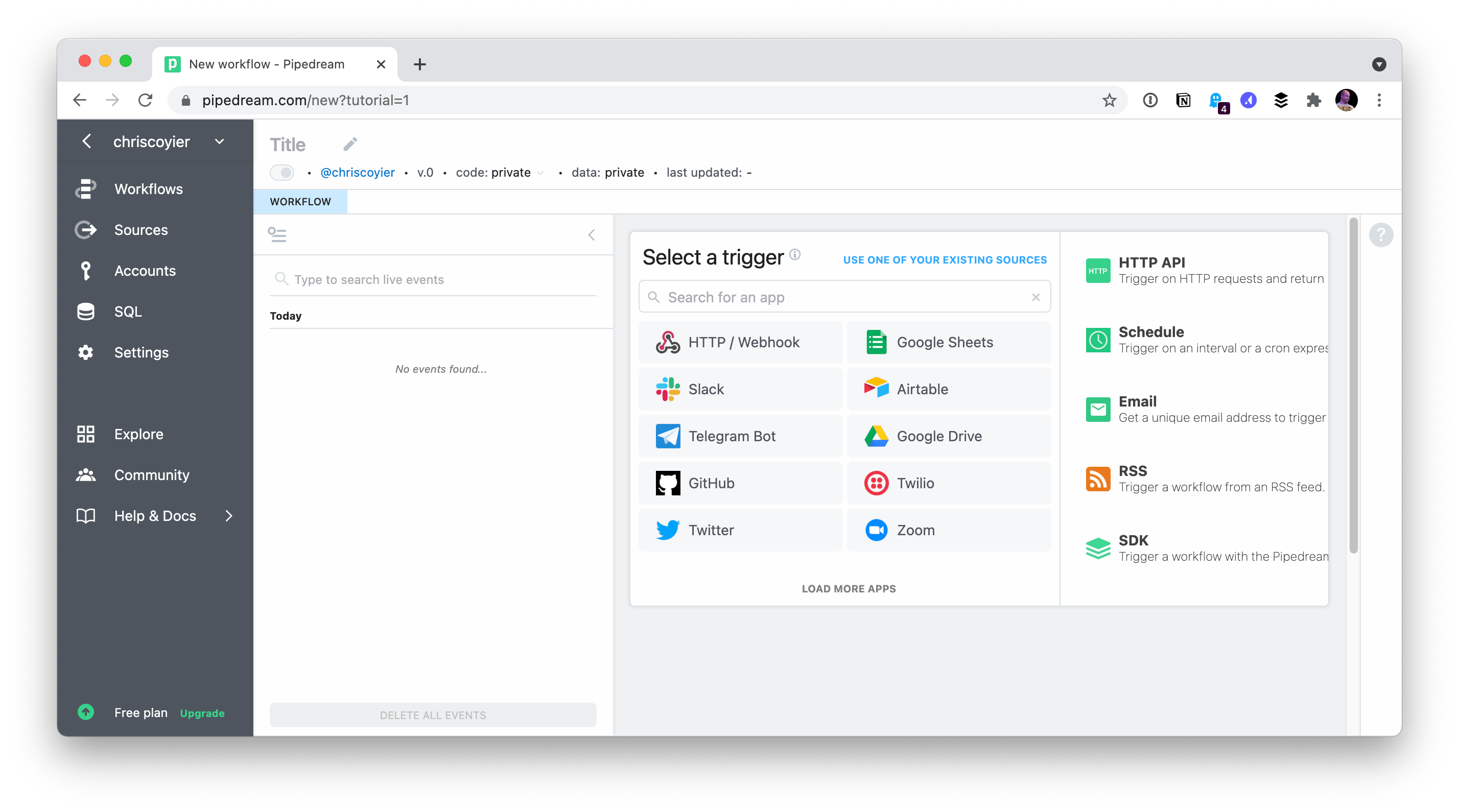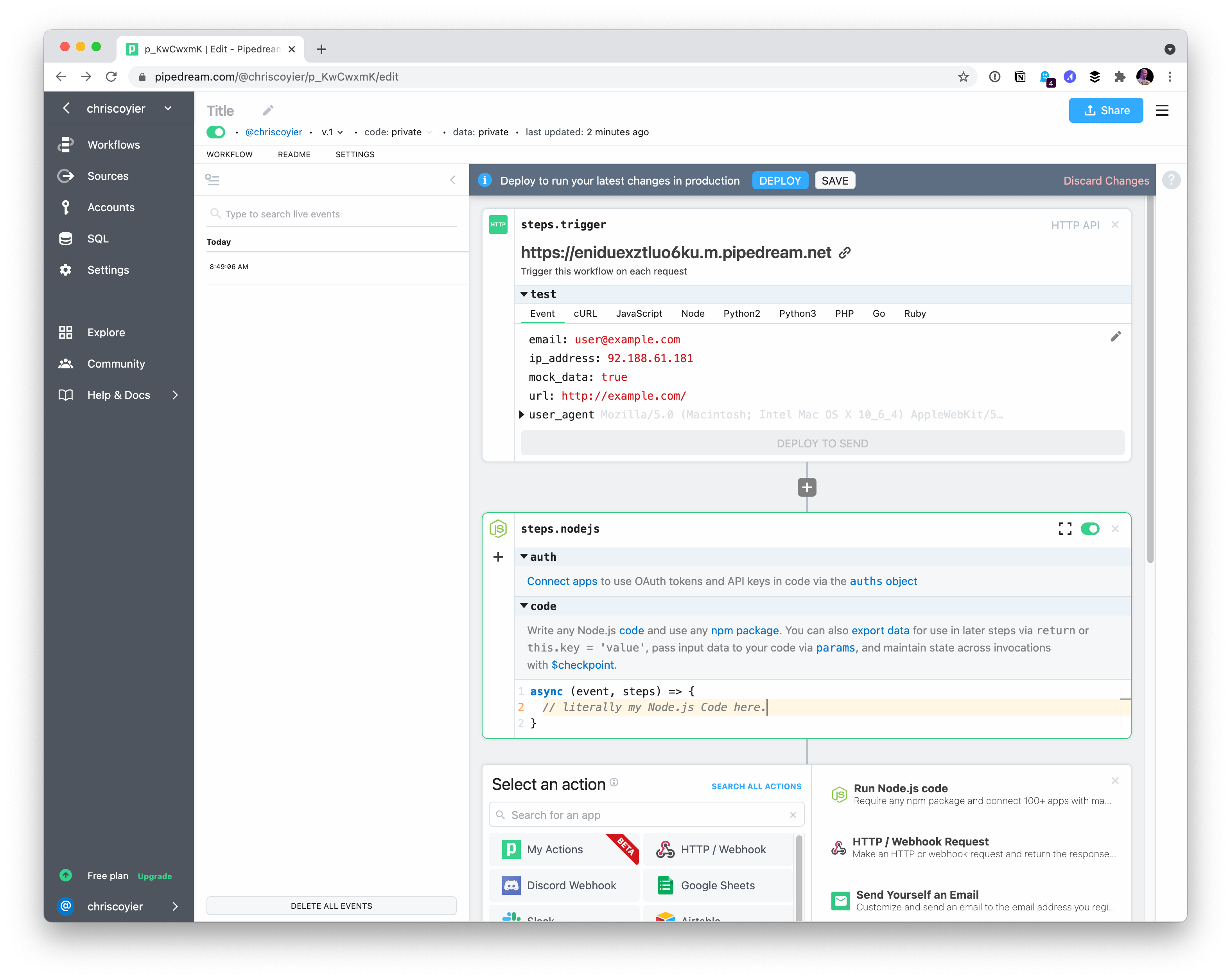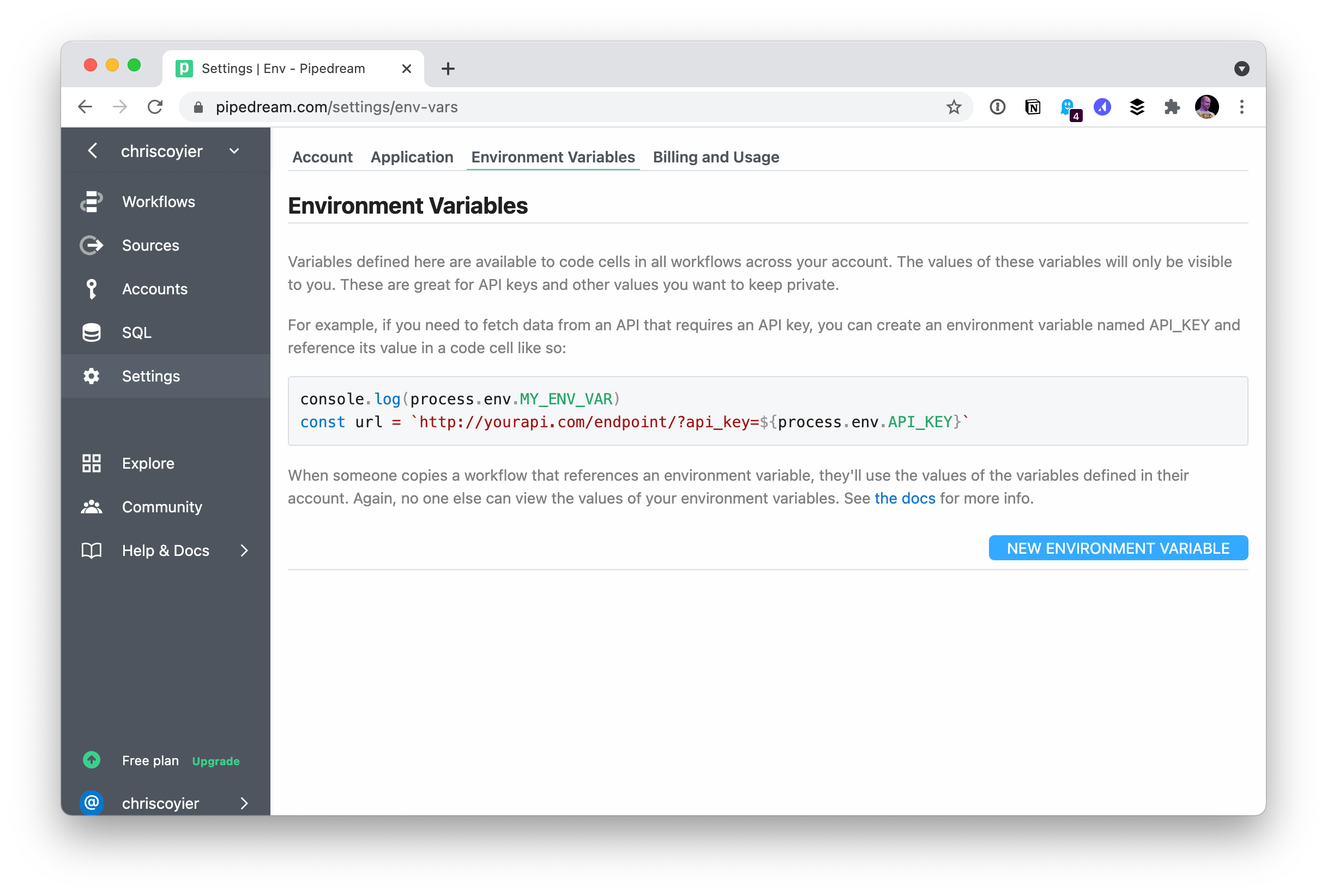The first time cloud functions / serverless functions clicked for me was when I saw and tried Auth0’s (now defunct) Webtask. It was a little CodePen-like Functions in AWS Amplify are probably a better bet there.
My guess is the proper modern way of building these things are things like…
But there are all sorts of other tools that seem pretty modern that I just can’t speak to as well, but seem good:
But what makes me think of all this, and is also in the category of things I don’t have any personal experience with, is Pipedream. I heard about it via Raymond, who has a similar story to mine:
One of the first things that intrigued me about serverless, and honestly it’s not really that novel, is the ability to build proxies to other APIs. So for example, imagine a cool API that requires authentication of some sort to use, like an API key. If you use this in client-side JavaScript, anyone can look at your code and get your key. Better services let you lock a key to a domain, but if you don’t have that option, then a simple use of serverless is to simply give you an endpoint that makes the call to the API with your key.
Raymond Camden, “Using Pipedream to Proxy Other APIs”
Pipedream looks pretty fancy:

Not only is it a web-based Zapier looks in that way, only where Zapier is entirely no-code (I think). Pipedream makes code a first-class citizen.

And it does secrets by way of account-level environment variables.

So, it’s perfect for being a serverless proxy. Read Raymond’s post for actual implementation and code examples.






